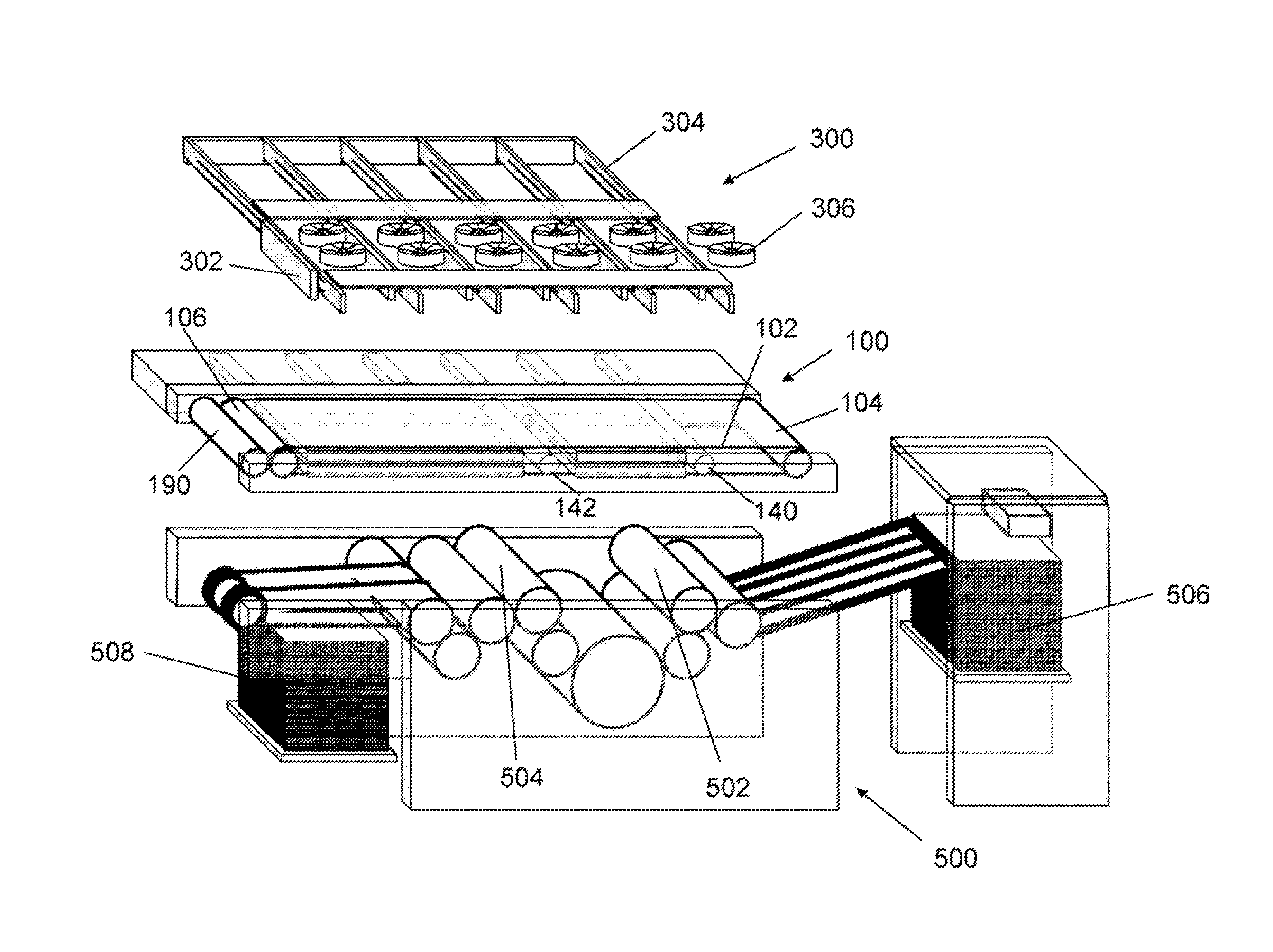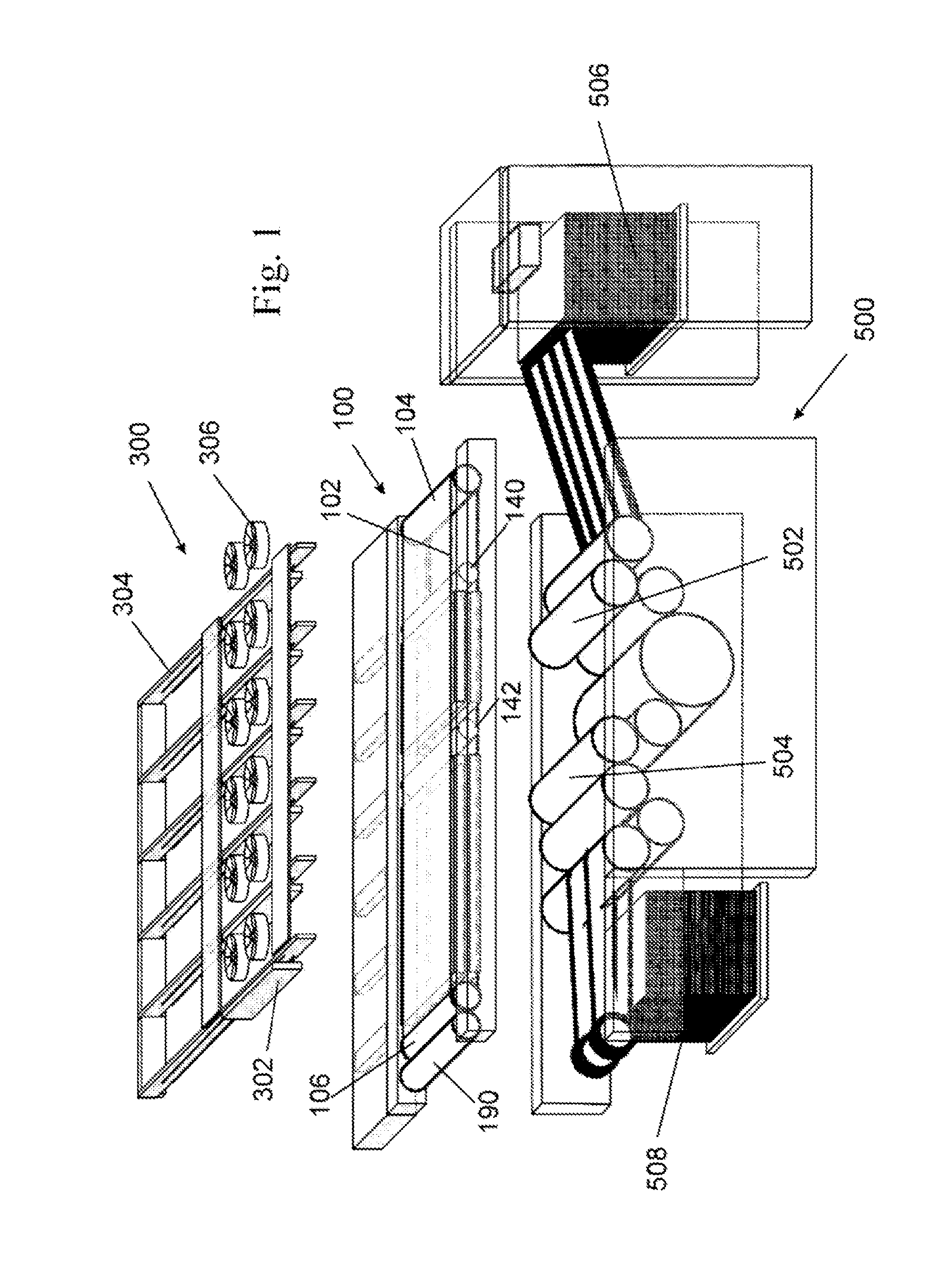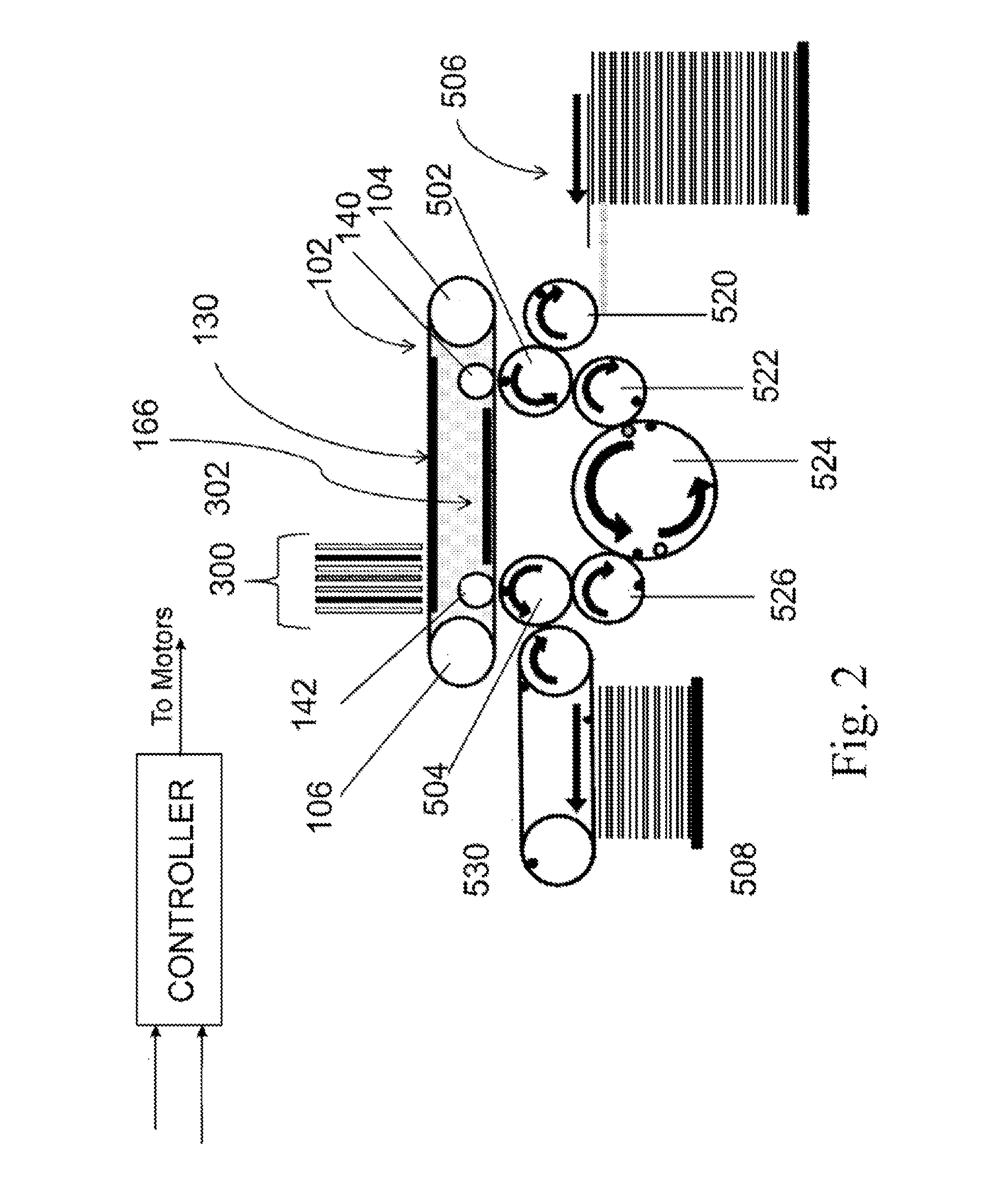Inkjet ink formulations
a technology of inkjet ink and formulation, which is applied in the field of ink formulations, can solve the problems of unsuitable printing applications, limited resolution of such processes, and inability to produce images of photographic quality acceptable for publications, etc., and achieve the effect of facilitating the transfer of dried images and difficult to remove the water in ink
- Summary
- Abstract
- Description
- Claims
- Application Information
AI Technical Summary
Benefits of technology
Problems solved by technology
Method used
Image
Examples
example 1
[0138]An inkjet ink formulation was prepared containing:
IngredientFunctionwt. %Jet Magenta DMQpigment2(BASF)Joncryl HPD 296polymeric resin (acrylic styrene10.6** (solid(BASF)p co-olymer solution, ave. MWresin content)~11,500)Glycerol (Aldrich)Water-miscible co-solvent20BYK 345 (BYK)surfactant (silicone)0.5Water—Balance to 100%**The polymeric resin was provided in a 35.5 wt. % water solution; 30 wt. % of the final formulation consisted of this solution, i.e. 10.6 wt. % in the final ink formulation consisted of the polymeric resin itself.
[0139]To prepare this ink formulation, a pigment concentrate containing pigment (10%), water (70%) and resin—in the present case Joncryl HPD 296—(20%) was made by mixing and milling them until the particle size (D50) reached about 70 nm. The remaining materials were then added to the pigment concentrate and mixed. After mixing, the ink was filtered through a 0.5 micron filter. At 25° C., the viscosity of the ink thus obtained was about 9 cP, and the s...
examples 2a and 2b
[0140]An inkjet ink formulation was prepared containing:
IngredientFunctionwt. %PV Fast Blue BG (Clariant)Pigment2.3Neocryl BT-9 (40% waterpolymeric resin (acrylic16.5dispersion) (DSM resins)polymer, average(6.6 solid resin)**MW ~68,000)Glycerol (Aldrich)Water-miscible3.3co-solventCapstone FS-65 (DuPont)Non-ionic0.1fluorosurfactantWater—Balance to 100%Joncryl HPD 296 (35.5%Dispersant9water solution) (BASF)(3.2 solid resin)**Diethyleneglycol (Aldrich)Water-miscible20co-solventDiethyl amine (Aldrich)pH raiser1**The BT-9 resin was provided in a 40 wt. % water dispersion, the HPD 296 was provided in a 35.5 wt. % water solution. 16.5% and 9%, respectively, of the final formulation consisted of these two components, i.e. 6.6 wt. % of the final ink formulation consisted of BT-9 itself and 3.2 wt. % consisted of HPD 296 itself.
[0141]Another inkjet ink formulation was prepared containing:
IngredientFunctionwt. %PV Fast Blue BG (Clariant)Pigment2.3Neocryl BT-9 (40% waterpolymeric resin (acrylic...
examples 3a and 3b
[0143]An inkjet ink formulation was prepared containing:
IngredientFunctionwt. %Jet Magenta DMQPigment2.3(BASF)Neocryl BT-26 (40%polymeric resin (acrylic17.25water dispersion) (DSMpolymer, ave. MW 25,000)(6.9 solid resin)**resins)Monoethanol aminepH raiser1.5Propylene glycolWater-miscible co-solvent20N-methylpyrrolidoneWater-miscible co-solvent10BYK 349 (BYK)surfactant (silicone)0.5Water—Balance to 100%**The polymeric resin was provided in a 40 wt. % water dispersion; the final ink formulation consisted of 17.25 wt. % of this dispersion, i.e. 6.9 wt. % in the final ink formulation consisted of the polymeric resin itself
[0144]Another inkjet ink formulation was prepared containing:
IngredientFunctionwt. %Jet Magenta DMQPigment2.3(BASF)Neocryl BT-26 (40%polymeric resin (acrylic17.5water dispersion) (DSMpolymer, ave. MW 25,000)(7 solid resin)**resins)Monoethanol aminepH raiser1.5Propylene glycolWater-miscible co-solvent20N-methylpyrrolidoneWater-miscible co-solvent10BYK 349 (BYK)surfactan...
PUM
| Property | Measurement | Unit |
|---|---|---|
| temperature | aaaaa | aaaaa |
| viscosity | aaaaa | aaaaa |
| dynamic viscosity | aaaaa | aaaaa |
Abstract
Description
Claims
Application Information
 Login to View More
Login to View More - R&D
- Intellectual Property
- Life Sciences
- Materials
- Tech Scout
- Unparalleled Data Quality
- Higher Quality Content
- 60% Fewer Hallucinations
Browse by: Latest US Patents, China's latest patents, Technical Efficacy Thesaurus, Application Domain, Technology Topic, Popular Technical Reports.
© 2025 PatSnap. All rights reserved.Legal|Privacy policy|Modern Slavery Act Transparency Statement|Sitemap|About US| Contact US: help@patsnap.com



